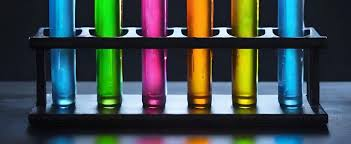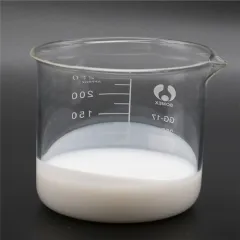Frequently made use of additives in plastic color matching include dispersants, lubricating substances, diffusion oils, coupling representatives, compatibilizers, etc. Frequently come across material ingredients include fire resistants, strengthening agents, brighteners, UV inhibitors, antioxidants, antibacterial representatives, antistatic agents, etc. The most usual ones are fillers for expense reduction or physical adjustment, such as light calcium carbonate, hefty calcium carbonate, talc, mica, kaolin, silica, titanium dioxide, red mud, fly ash, diatomaceous planet, wollastonite, glass grains, barium sulfate, calcium sulfate, etc, along with organic fillers, such as timber flour, corn starch, and various other agricultural and forestry spin-offs. Loading and strengthening products consist of glass fiber, carbon fiber, asbestos fiber, synthetic natural fiber, and so on
Intend the above additives are added to the product’s resources. Because situation, they should be included in the material basic materials in the very same percentage in the color-matching proofing so as not to create a shade difference in the subsequent manufacturing.
(Additives for Plastic Color Matching)
Dispersant
Dispersant types include fatty acid polyurea, hydroxy stearate, polyurethane, oligomeric soap, etc
At present, the generally used dispersant in the industry is lubricating substance. Lubricants have excellent dispersibility and can additionally improve the fluidness and demolding efficiency of plastics throughout molding.
Lubricating substances are divided into interior lubes and exterior lubricating substances. Inner lubricating substances have a certain compatibility with resins, which can reduce the cohesion between material molecular chains, lower melt viscosity, and enhance fluidness. External lubricating substances have bad compatibility with materials. They adhere to the surface of molten resins to create a lubricating molecular layer, thus decreasing the friction in between resins and handling devices.
Lubricants
According to the chemical structure, they are primarily split into hydrocarbons, steel soaps, lubricating substances that play a demolding function, fatty acids, fat amides, and esters.
Such as vinyl bis ceramide (EBS)
EBS (Ethylene Bis Stearamide), also known as plastic bis stearamide, is an extremely efficient inner and external lube and dispersant commonly used in the plastic handling industry. It appropriates for all polycarbonate and thermosetting plastics, consisting of yet not restricted to polyethylene (PE), polypropylene (PP), polystyrene (PS), polycarbonate (PC), polyamide (), polyester (PET/PBT), polyurethane (PU), phenolic resin, epoxy resin, and so on. Below are some of the primary functions of EBS in these plastics:
(EBS Ethylene Bis Stearamide Emulsion)
Dispersion
As a dispersant, EBS can help equally disperse fillers and pigments during plastic handling, stay clear of agglomeration, and boost the diffusion and stability of pigments and fillers. This assists boost the color uniformity and mechanical residential or commercial properties of the end product. For example, in masterbatch manufacturing, EBS can guarantee that pigment bits are equally distributed in the carrier material to ensure that regular color is exhibited in succeeding plastic items.
Interior lubrication
In the plastic thaw, EBS can lower the friction between molecules and the shear stress and anxiety of the plastic melt, therefore reducing the melt thickness and making the melt flow smoother. This helps in reducing pressure throughout extrusion or injection molding, lowers handling temperatures, and shortens molding cycles, while likewise minimizing energy consumption, boosting handling effectiveness, and improving the life span of devices.
Outside lubrication
EBS forms a thin lubricating movie on the plastic surface area, which can minimize the rubbing between the plastic thaw and the metal mold, improve demolding efficiency, and prevent sticking of plastic items throughout molding. This not only aids to improve the surface area finish of the item and lower problems but likewise simplifies the post-processing process and enhances manufacturing effectiveness.
Other features
Along with the above major functions, EBS can also be made use of as an antistatic representative to improve the antistatic residential properties of plastic items and decrease troubles such as dust adsorption triggered by fixed electrical energy. In some applications, EBS can additionally enhance the weather resistance and chemical resistance of plastic items.
In the shot molding process, when dry coloring is made use of, surface area treatment agents such as white mineral oil and diffusion oil are normally included throughout blending to play the function of adsorption, lubrication, diffusion, and demolding. When adjusting the color, it should additionally be contributed to the raw products symmetrical. Initially, add the surface therapy agent and tremble well, after that include the color powder and shake well.
When choosing, the temperature resistance of the dispersant ought to be determined according to the molding temperature level of the plastic basic material. From a cost viewpoint, in principle, if a tool and low-temperature dispersant can be utilized, a high-temperature resistant one should not be picked. High-temperature dispersants need to be resistant to more than 250 ┬░ C.
Vendor of EBS Ethylene Bis Stearamide Emulsion
TRUNNANO is a supplier of 3D Printing Materials with over 12 years experience in nano-building energy conservation and nanotechnology development. It accepts payment via Credit Card, T/T, West Union and Paypal. Trunnano will ship the goods to customers overseas through FedEx, DHL, by air, or by sea. If you want to know more about EBS Emulsion, please feel free to contact us and send an inquiry.
Inquiry us

